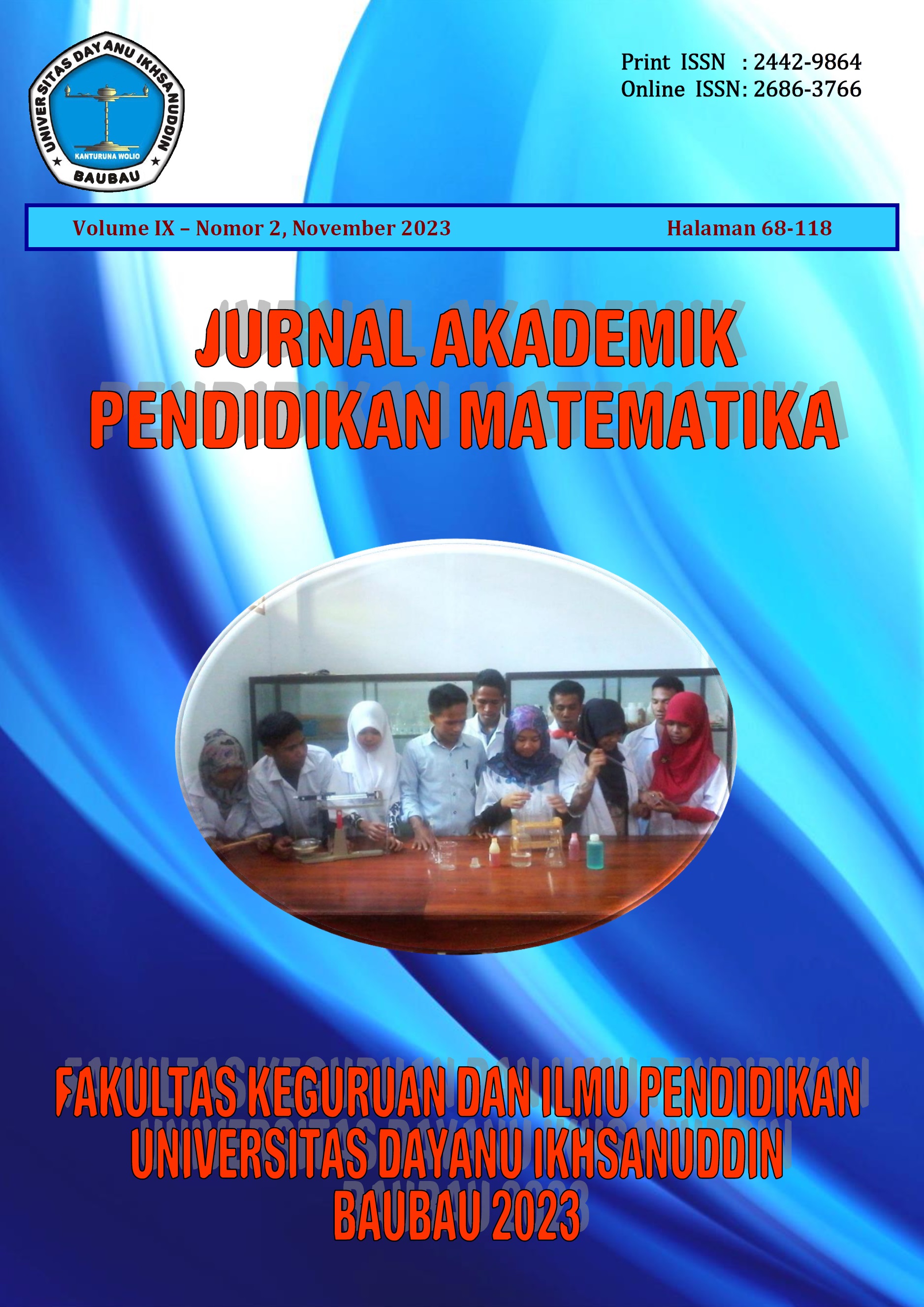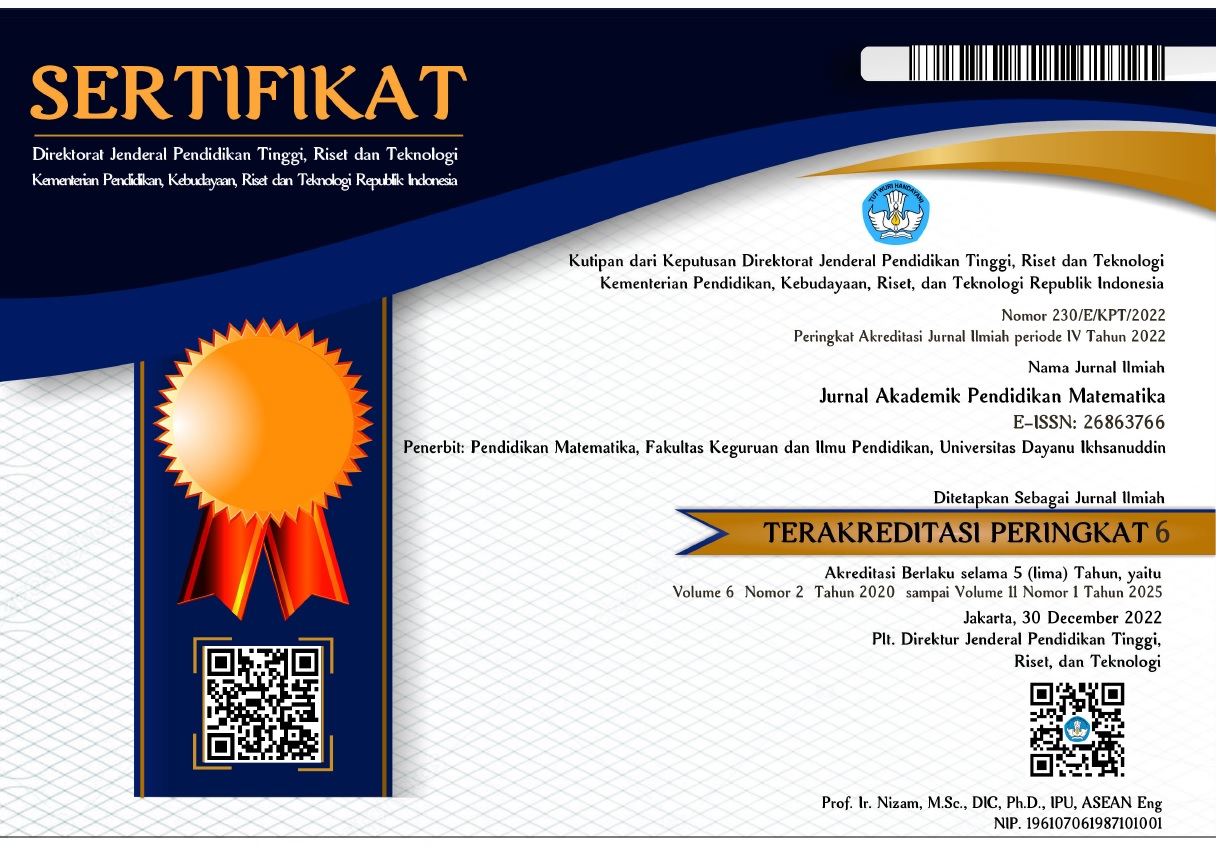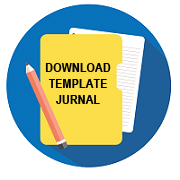Analysis of High School Students’ Mathematical Ability in Solving Story Problems on System of Linear Inequalities in Two Variables
DOI:
https://doi.org/10.55340/japm.v9i2.1352Keywords:
mathematical ability, matter of story, system of linear inequalities in two variablesAbstract
The formulation of the problem in this research is how are high school student’ mathematical abilities in solving story problem on system of two variables linear inequalities? This research aims two analyze the mathematical abilities of high scool students in solving story problems on two-variable system of linear inequalities. This research uses descriptive research methods with a qualitative approach. The subjects in this research were 25 students of sman 1 pasarwajo science class v. Data collection in thi research was carried out using research instruments in the form of tests and interviews with students, to measure high school students’ mathematical abilities in story test through yhe material on the system of linear inequalities in two variables. Based on the research results, the following conclusions were obtained: (1) for problem solving abilities, it is known that in hihg ability subjects there are 16% of students, 24% in medium ability subjects, and 60% in low ability subjects. (2) For reasoning ability, it is known that in high ability subjects there are 4% of students, in medium ability subjcts there are 8%, and in low ability there are 88% of students. (3) For mathematical communication skills, it is known that in the high ability subject there are 4% of students, in the medium subject there are 24%, and in the low ability subject there are 72% of students. (4) For mathematical connection abilities in high ability subjects there are 16% of students, 20% of students in medium ability subjects, and 64% of students in low ability subjects. (5) For representational ability in high ability subjects there are 4% of students, in medium ability subjects there are 6% of students, and in low ability subjects there are 80% of students.
Downloads
References
Arikunto, S. (2002). Dasar-Dasar Evaluasi Pendidikan. PT. Rineka Cipta.
Artiah, & Untarti, R. (2017). Pengaruh Model Reciprocal Teaching terhadap Kemampuan Representasi Matematis Siswa Kelas VII SMP Negeri 6 Purwokerto. AlphaMath, 3(1).
Azis, A., & Ali, S. (2019). Pengaruh Jam Belajar Pada Mata pelajaran Matematika terhadap Prestasi Belajar Siswa Kelas XI SMA Negeri 1 Batauga. Jurnal Akademik Pendidikan Matematika, 5(2), 94–101. https://doi.org/10.31219/osf.io/pfu6j
Azis, A., Iriana, A., & Sudin, L. (2022). Analisis Kesalahan Siswa dalam Menyelesaikan Soal-Soal Pemecahan Masalah Matematika pada Siswa Kelas XI MIA SMA. Jurnal Akademik Pendidikan Matematika. https://doi.org/10.55340/japm.v8i1.697
Basir, M. A. (2015). Kemampuan Penalaran Siswa dalam Pemecahan Masalah Matematis Ditinjau dari Gaya Kognitif. Jurnal Pendidikan Matematika FKIP Unissula, 3(1).
Fatqurhohman, F. (2016). PEMAHAMAN KONSEP MATEMATIKA SISWA DALAM MENYELESAIKAN MASALAH BANGUN DATAR. JIPM (Jurnal Ilmiah Pendidikan Matematika), 4(2). https://doi.org/10.25273/jipm.v4i2.847
Faturrahman, I. K., Ahmadi, S. A., & HA, S. (2012). Pengantar Pendidikan. PT. Prestasi Pustakaraya.
Hasniati, H., Jais, E., & Herlawan, H. (2020). Peningkatan Kemampuan Pemecahan Masalah Melalui Pendidikan Matematika Realistik (PMR) pada Siswa Kelas VII SMP Negeri 1 Tomia. Jurnal Akademik Pendidikan Matematika, 133–139. https://doi.org/10.55340/japm.v6i2.268
Hendriana, H., & Sumarmo, U. (2017). Penilaian Pembelajaran Matematika. PT Refika Aditama.
Hudojo, H. (2005). Pengembangan Kurikulum dan Pembelajaran Matematika. UM Pers, 18(2).
Konita, M., Asikin, M., & Asih, T. S. N. (2019). Kemampuan Penalaran Matematis dalam Model Pembelajaran Connecting, Organizing, Reflecting, Extending (CORE). PRISMA,Prosiding Seminar Nasional Matematika 2, 2.
Lestari, K. E., & Yudhanegara, M. R. (2015). Penelitian Pendidikan Matematika. In PT.Refika Aditama.
Mubarika, M. P., Firmansyah, E., & Yulianie, L. (2020). Implementasi Dimensi Connectedness Dalam Problem Based Learning Untuk Meningkatkan Koneksi Matematis Dan Disposisi Matematis. Pasundan Journal of Mathematics Education : Jurnal Pendidikan Matematika, Vol 10 No 1. https://doi.org/10.23969/pjme.v10i1.2443
Nugraha, A. A. (2018). Analisis koneksi matematis siswa pada materi SPLDV. Suska Journal of Mathematics Education. https://doi.org/10.24014/sjme.v4i1.4579
Palapasari, R., Kadir, & Anggo, M. (2017). Pengaruh Penerapan Konstruktivis Realistik Dan Kemampuan Dasar Matematika Terhadap Peningkatan Kemampuan Pemecahan Masalah Siswa SMP. Jurnal Pendidikan Matematika, 8(1).
Rahmadian, N., Mulyono, & Isnarto. (2019). Kemampuan representasi matematis dalam model pembelajaran somatic, auditory, visualization, intellectually (SAVI). PRISMA, Prosiding Seminar Nasional Matematika, 2.
Riasari, D. (2018). Peranan Model Pembelajaran Matematika Berbasis Blended Learning Terhadap Komunikasi Matematis Siswa dalam Materi Statistik Pada SMAN 1 Tapung. Jurnal Pendidikan Tambusai, 2(4).
Sumitro, Siswoyo, D., Sulistyiono, T., Giyono, W., Wibowo, L. H., & Sidharto, S. (2003). Pengantar Ilmu Pendidikan. FIP UNY.
Trisnawati, T., Pratiwi, R., & Waziana, W. (2018). The effect of realistic mathematics education on student’s mathematical communication ability. Malikussaleh Journal of Mathematics Learning (MJML), 1(1). https://doi.org/10.29103/mjml.v1i1.741
Wibowo, S. A. (2014). Penerapan Model Pembelajaran Knisley Dengan Metode Brainstorming Untuk Meningkatkan Kemampuan Komunikasi Matematik. Universitas Muhammadiyah Surakarta.



























